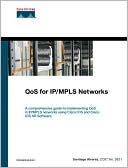Models of Network Reliability: Analysis, Combinatorics, and Monte Carlo
Unique in its approach, Models of Network Reliability: Analysis, Combinatorics, and Monte Carlo provides a brief introduction to Monte Carlo methods along with a concise exposition of reliability theory ideas. From there, the text investigates a collection of principal network reliability models, such as terminal connectivity for networks with unreliable edges and/or nodes, network lifetime distribution in the process of its destruction, network stationary behavior for renewable components,...
Search in google:
Unique in its approach, Models of Network Reliability: Analysis, Combinatorics, and Monte Carlo provides a brief introduction to Monte Carlo methods along with a concise exposition of reliability theory ideas. From there, the text investigates a collection of principal network reliability models, such as terminal connectivity for networks with unreliable edges and/or nodes, network lifetime distribution in the process of its destruction, network stationary behavior for renewable components, importance measures of network elements, reliability gradient, and network optimal reliability synthesis.Solutions to most principal network reliability problems—including medium sized computer networks—are presented in the form of efficient Monte Carlo algorithms and illustrated with numerical examples and tables. Written by reliability experts with significant teaching experience, this reader-friendly text is an excellent resource for software engineering, operations research, industrial engineering, and reliability engineering students, researchers, and engineers. Stressing intuitive explanations and providing detailed proofs of difficult statements, this self-contained resource includes a wealth of end-of-chapter exercises, numerical examples, tables, and offers a solutions manual—making it ideal for self-study and practical use.
Preface Notation and Abbreviations What is Monte Carlo Method?Area Estimation Optimal Location of Components Reliability of a Binary System Statistics: a Short Reminder What is Network Reliability? Introduction Spanning Trees and Kruskal’s Algorithm Introduction to Network Reliability Multistate Networks Network Reliability BoundsExponentially Distributed LifetimeCharacteristic Property of the Exponential Distribution Exponential Jump Process ExamplesStatic and Dynamic ReliabilitySystem Description. Static Reliability Dynamic Reliability Stationary Availability Burtin-Pittel Formula Pivotal Formula. Reliability GradientReliability GradientDefinition of Border States Gradient and Border StatesOrder Statistics and D-spectrum Reminder of Basics in Order Statistics Min-Max Calculus Destruction Spectrum (D-spectrum) Number of Minimal size Min-CutsMonte Carlo of Convolutions CMC for Calculating Convolutions Analytic Approach Conditional Densities and Modified Algorithm Generating Bm(T) How Large is Variance Reduction Comparing to the CMC? Importance Sampling in Monte Carlo Network Destruction Introduction Estimation of FN(t) = P(τ* ≤ t) Unreliable Nodes Identically Distributed Edge Lifetimes Examples of Using D-spectraLomonosov’s "Turnip" Introduction The Turnip Applications of Turnip Unreliable NodesImportance Measures and Spectrum Introduction: Birnbaum Importance Measure Cumulative Spectrum BIM and the Cumulative C*-spectrum BIM and the Invariance Property ExamplesOptimal Network Synthesis Introduction to Network Synthesis "Asymptotic" Synthesis Synthesis Based on Importance Measures Dynamic Networks Introduction: Network Exit Time Bounds on the Network Exit TimeExamples of Network ReliabilityColbourn & Harms’ Ladder Network Integrated Communication Network (ICN)Appendix A: O(·) and o(·) symbolsAppendix B: Convolution of exponentialsAppendix C: Glossary of D-spectraReferencesIndex Each chapter includes problems and exercises








